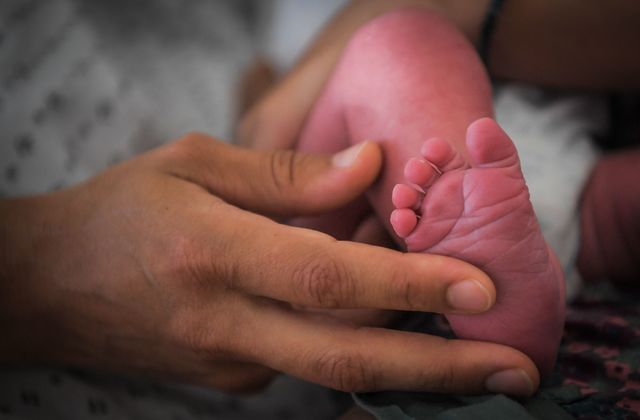Children born via cesarean section may be more likely to develop autism and attention deficit hyperactivity disorder, a new analysis indicates.
Reviewing earlier data encompassing more than 20 million births in 19 countries, researchers found C-sections were associated with an estimated 33% higher chance of an autism spectrum disorder diagnosis and an estimated 17% higher odds of ADHD than vaginal births. They found little to no link with other disorders, according to the analysis, published Wednesday by JAMA Network Open.
“Our study does not provide irrefutable proof that C-sections cause psychiatric disorders. Association is not causation,” Tianyang Zhang, a researcher at the Karolinska Institute in Sweden and lead author of the study, tells U.S. News.
“However, we believe that the study provides information that may help parents (and) doctors to make informed decisions about how they want their births to be,” Zhang adds.
While researchers said the links between C-sections and autism and ADHD were statistically significant, other disorders – including learning disabilities, tics, obsessive-compulsive disorder and eating disorders – carried similar or higher odds of diagnosis in tandem with a cesarean section, but those odds were not statistically significant. That may have been due to a small sample of prior studies on the conditions included in the new analysis.
Researchers found close to no association between cesarean delivery and depression and affective or no affective psychotic disorders.
“With such a rapid shift at the population level in how women are giving birth, it’s good to examine possible unintended long-term consequences,” says Jill Arnold, a patient advocate and executive director of the Maternal Safety Foundation. She reviewed the new study findings but was not involved with the research.
The analysis was based on a review of findings from 61 studies published between 1998 and 2018 and from a wide range of countries: Australia, Brazil, Canada, China, Denmark, Egypt, Finland, Iran, Iraq, Japan, Lebanon, Norway, Poland, Spain, South Korea, Sweden, Turkey, the United Kingdom and the U.S., as well as Taiwan.
Researchers said it’s important to understand why there may be a link between cesareans and some disorders, especially as C-section rates have risen in recent years. The international health community points to an ideal cesarean rate of 10% to 15% for populations, though there can be much variation between countries and within a country itself.
In the U.S., for example, the overall C-section rate was 32% in 2017, up from 22.9% in 2000, according to data from the Centers for Disease Control and Prevention. State rates, meanwhile, ranged from 22.5% in Alaska to 37.8% in Mississippi in 2017.
“Public health concerns have been raised because access to medically indicated cesarean delivery may be difficult in low-resource settings and unnecessary cesarean deliveries may be performed in high-resource settings,” researchers said.
Existing studies have focused on links between C-sections and greater health risks for mothers and babies, such as future pregnancy complications and food allergies in infants.
Zhang said subsequent research should focus on whether C-sections cause the development of disorders like autism, or whether other factors – like the reasons women have cesareans or the resources available where they gave birth – play a more important role.
“Researchers should continue (to) investigate what are the underlying causes of the observed associations,” Zhang says. (https://www.usnews.com/news/health-news/articles/2019-08-28/c-section-tied-to-higher-risk-of-autism-adhd)





































